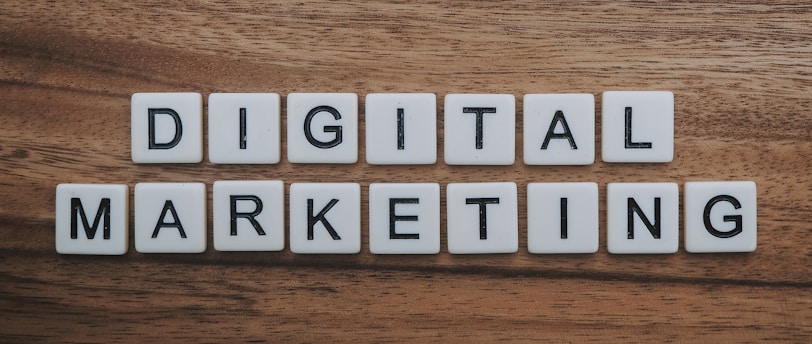Digital Marketing: The Future of Business Growth
Digital marketing is revolutionizing how businesses connect with their audience and grow in the modern age. This blog explores the key components of digital marketing, including SEO, social media, content marketing, and analytics, while highlighting emerging trends like AI, video content, and voice search optimization. Learn how digital marketing enables cost-effective, targeted, and measurable campaigns that drive global reach and customer engagement. Whether you're a small business or an established brand, discover actionable tips to start or refine your digital marketing strategies and stay ahead in today's competitive landscape.
DIGITAL MARKETING


In the rapidly evolving world of technology, digital marketing has emerged as a pivotal tool for businesses to connect with their audience, boost sales, and establish a strong online presence. As more consumers rely on the internet for information, entertainment, and shopping, mastering digital marketing is no longer optional – it’s essential.
What is Digital Marketing?
Digital marketing refers to the use of digital channels such as search engines, social media platforms, email, and websites to promote products or services. Unlike traditional marketing methods, digital marketing allows businesses to reach a global audience, track performance in real time, and adapt strategies based on data-driven insights.
Key Components of Digital Marketing
Search Engine Optimization (SEO): SEO involves optimizing a website to rank higher on search engine results pages (SERPs). By using relevant keywords, creating quality content, and ensuring a website is technically sound, businesses can attract organic traffic and improve visibility.
Content Marketing: Creating valuable, engaging, and relevant content is the cornerstone of content marketing. Blog posts, videos, infographics, and eBooks help build trust and authority, positioning a brand as a thought leader in its industry.
Social Media Marketing: Platforms like Facebook, Instagram, LinkedIn, and Twitter allow businesses to interact directly with their audience. By sharing compelling content, running targeted ads, and engaging with followers, brands can build a loyal community.
Pay-Per-Click Advertising (PPC): PPC involves paying for ad placements on platforms like Google Ads or social media. These ads appear prominently on search results or feeds, driving immediate traffic to websites.
Email Marketing: Email remains one of the most effective digital marketing tools. Through personalized newsletters, promotional offers, and updates, businesses can nurture leads and maintain customer relationships.
Affiliate Marketing: This performance-based strategy involves partnering with affiliates who promote a business’s products or services in exchange for a commission on sales or leads generated.
Analytics and Data Analysis: Understanding customer behavior through tools like Google Analytics enables marketers to refine strategies, improve user experience, and achieve better ROI.
Why Digital Marketing Matters
Cost-Effective: Compared to traditional advertising methods like TV or print media, digital marketing offers more affordable options, making it accessible for businesses of all sizes.
Measurable Results: With tools and metrics available, businesses can measure the success of campaigns and make data-driven decisions.
Targeted Reach: Advanced targeting options enable marketers to reach specific demographics, ensuring campaigns resonate with the right audience.
Global Reach: A well-executed digital marketing campaign can take a business beyond geographical boundaries, opening up opportunities in new markets.
Improved Customer Engagement: Digital channels provide avenues for real-time interaction with customers, fostering loyalty and trust.
Trends Shaping Digital Marketing in 2024
AI and Automation: Artificial intelligence is transforming how businesses approach marketing. Tools like chatbots, predictive analytics, and personalized recommendations enhance customer experiences.
Video Content Dominance: Platforms like YouTube, TikTok, and Instagram Reels have proven the power of short-form video content. Businesses are leveraging videos to showcase products, tell stories, and engage audiences.
Voice Search Optimization: With the rise of smart speakers and voice assistants, optimizing content for voice search is becoming crucial.
Sustainability and Ethical Marketing: Consumers are increasingly drawn to brands that prioritize sustainability and ethical practices. Transparency and authenticity are key.
Omnichannel Marketing: A seamless experience across multiple channels – online and offline – ensures customers can interact with a brand effortlessly.
Getting Started with Digital Marketing
For businesses new to digital marketing, starting can seem overwhelming. Here are a few steps to ease the journey:
Define Your Goals: Establish clear objectives, whether it’s increasing website traffic, generating leads, or boosting sales.
Know Your Audience: Understand your target demographic, including their preferences, behaviors, and challenges.
Choose the Right Channels: Focus on platforms that align with your audience’s interests and habits.
Invest in Quality Content: Content is king. Ensure your content is informative, engaging, and tailored to your audience.
Monitor and Optimize: Continuously track your campaigns and make adjustments based on performance data.
Conclusion
Digital marketing is an ever-evolving field that offers endless opportunities for businesses to grow and thrive. By embracing its components and staying updated with the latest trends, businesses can create impactful campaigns that resonate with their audience. Whether you’re a small business or an established brand, leveraging digital marketing can unlock new levels of success in today’s competitive landscape.
